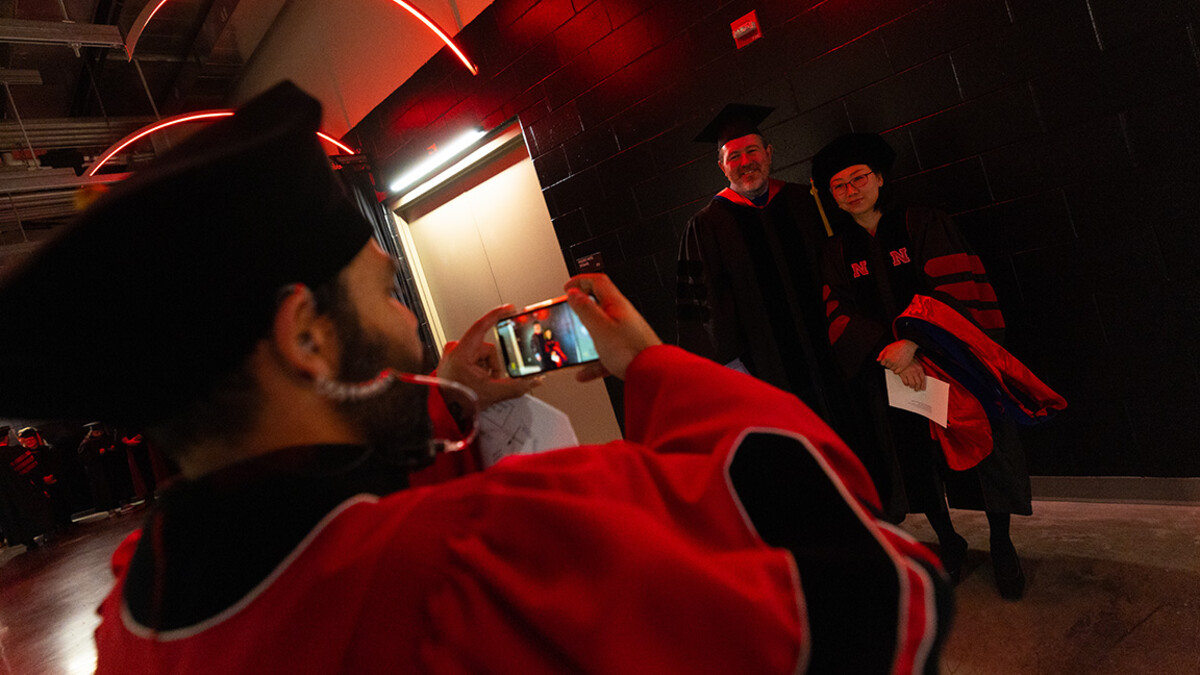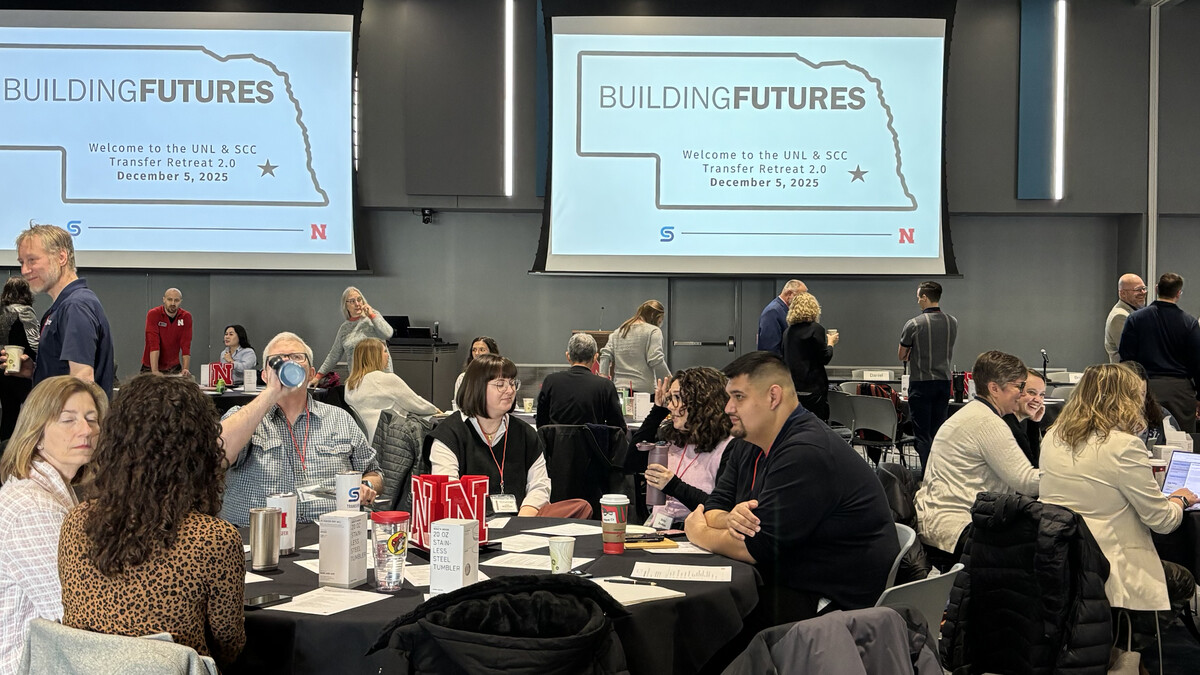
The courtyard area just a few yards from the north entry of Kiewit Hall had all the looks, sounds and feels of a typical construction site. But it was much more than that.
The outdoor patio became a nontraditional learning environment where many of the 92 students in Emmeline Watson’s Vertical Construction classes gained their first experience working on a construction job, building nine sheds in about two weeks. For some, it was using power tools for the first time; for others, it was a chance to put into action the academic knowledge gleaned from the entire semester.
But for everyone involved - from instructor to students to the veteran construction professionals who provided on-site mentoring - it was an opportunity to help build hope in the Lincoln community.

“In class, I teach what a 2-by-4 is, what treated lumber is used for, why you do this or that, but until they are seeing and caring about a job they’re doing, it doesn’t fully sink in sometimes,” said Watson, assistant professor of practice in the Durham School of Architectural Engineering and Construction. “That’s a big part of what I wanted the students to learn from this (project), but I also wanted to them to learn the importance of engaging their community and giving something back.”
The sheds and one doghouse were sold to benefit Hope Village, Lincoln’s first “tiny home” village being built by Bridges to Hope. The nonprofit’s website describes the community of 300-to-500-square-foot dwellings as “stable, dignified housing” for individuals recently released from the prison system and their families.
From the start of the semester, Watson said, students were immersed in every part of the construction process - from designing their structures to putting the final nails in their builds.
The sheds – which include a large window and a solar panel on the roof - raised about $10,000, but the construction management students said it was the lessons learned throughout the semester that will hopefully last a lifetime.
“We had to design our own sheds and collaborate on everything: the dimensions, the materials we used, making schedules,” said Jaeda Jeffries, a junior. “From the design, to how to be part of a team and have good teamwork, as well as being able to coordinate and keep to a schedule, that’s important for a construction career.”
Sophomore Cameron Lenhardt compared the construction site to his experiences in athletics as a defensive lineman for the Husker football team.
“It’s learning the steps (in the building process) and what role you play is a big part of this,” Lenhardt said. “It’s been great to take the foundation of what we’ve learned in class and put it into life out here.”
Sophomores Ashley Garrard and Hallie Hamilton said the experience was important as they both prepare for their first internships this summer.
“It’s kind of the first time we’re getting our hands dirty, our first time getting to be on a job site and learning the ropes about what goes on every day,” Garrard said.

Multiple industry partners - including Watts Electric, Mortenson, Perry Reid Construction, Millard Lumber, Stonebrook Exterior, Pella Windows and Doors, and BluCor Construction Group - and some of the students’ parents donated materials and/or mentorship on the job site.
Watson said it was gratifying to see the communities within the university, the College of Engineering and the Durham School play a big role in a project that could have a long-lasting and far-reaching impact.
“(The University of Nebraska-Lincoln's City Campus) is like a small town, with so many people going out from here and building lives. But what goes around comes around, right?” Watson said. “The students literally could be changing someone’s life by building a little shed.
“I tell the students they are the ones donating. They are the ones making a difference. If you’ve tried to do a little better for someone, that can have the biggest impact.”







